Part 51: San Francisco: September 14, 1944

The invasion is a bit stalled at the moment, since the American tanks have proven tough to take down, and our lack of air support is hurting us. We have a chance to change that all with our run up through the East Bay.
Axis Turn 15: September 14, 1944
Fair (Dry)
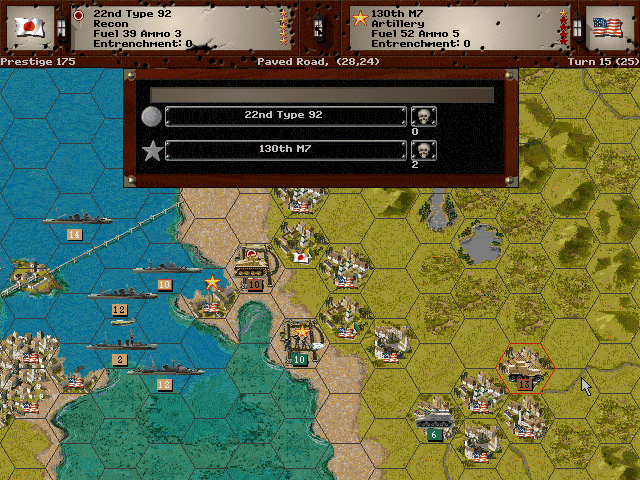
With naval support, we're able to capture the airfield at Alameda, and knock around the American units with even our fairly outdated vehicles.
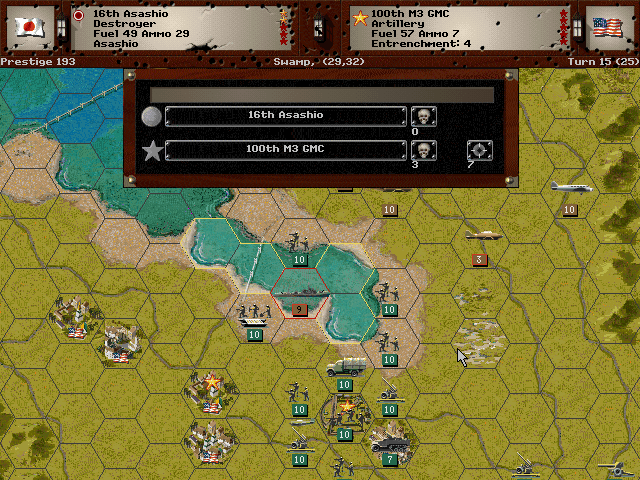
The Asashio finds its way south of the Dunbarton [sic] bridge, and starts shelling the American units near Moffett.
Given that this game was developed mere miles from said bridge, that misspelling is fairly telling about the quality control on the map design.
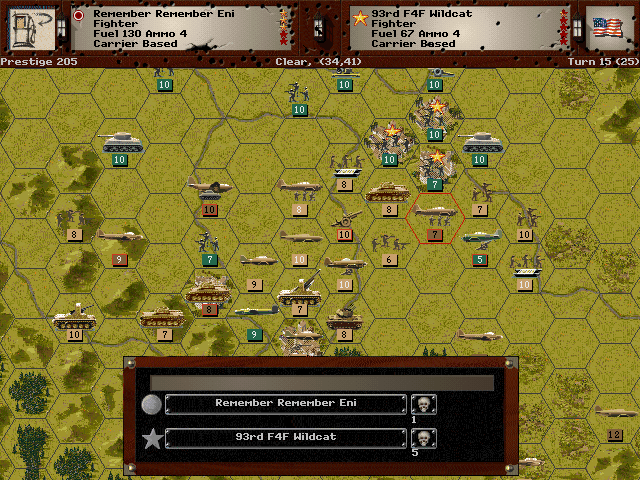
The Navy is even able to send their fighters inland now that any serious threat to our ships has been eliminated.
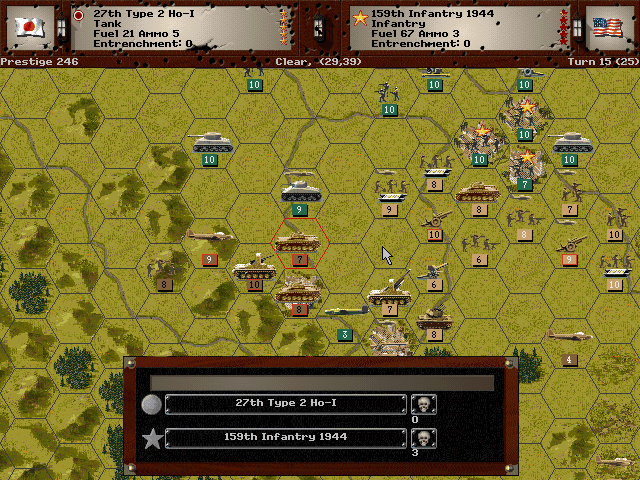
Morale rises as we take out some more American infantry.
Allied Turn 15: September 14, 1944
Fair (Dry)
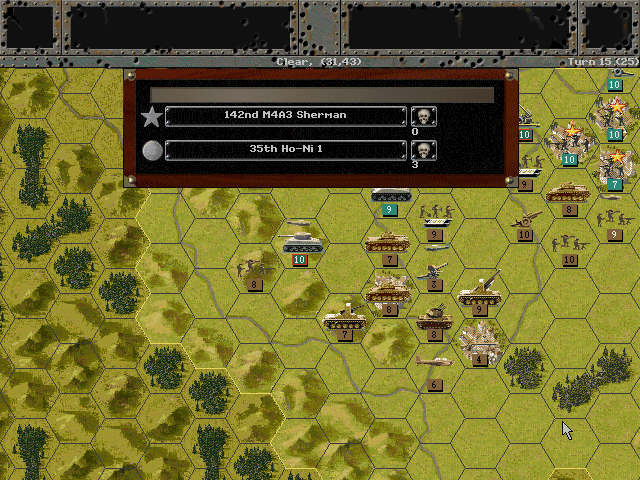
The American tanks remain a constant threat on our flanks, but we are still holding on to Saratoga.
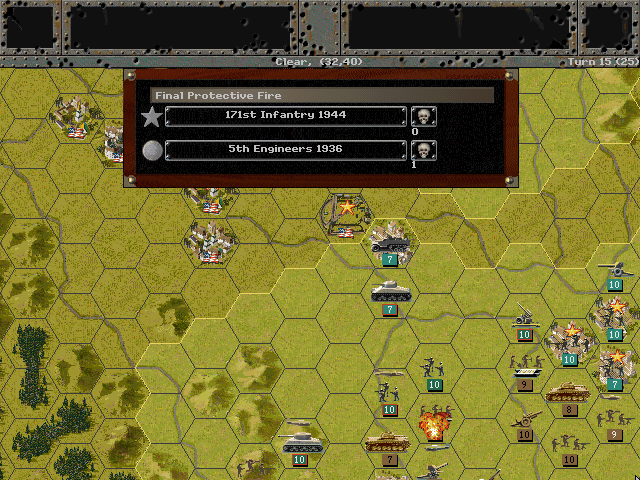
We seem to be wearing down their infantry, as they aren't inflicting very heavy casualties on us.
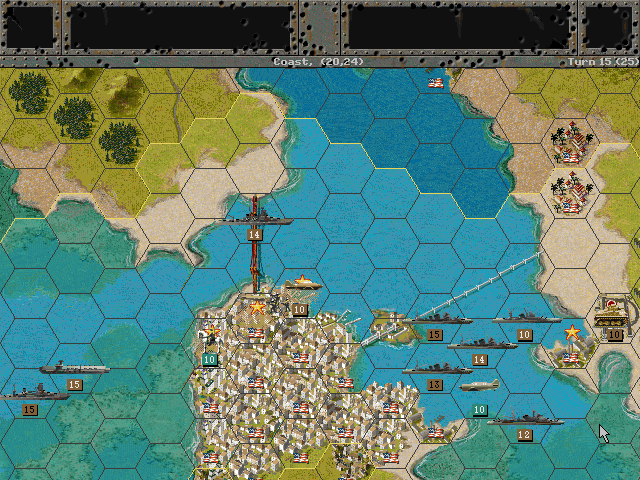
Some planes reconnoiter our ships, but no attacks are made.
Axis Turn 16: September 15, 1944
Fair (Dry)
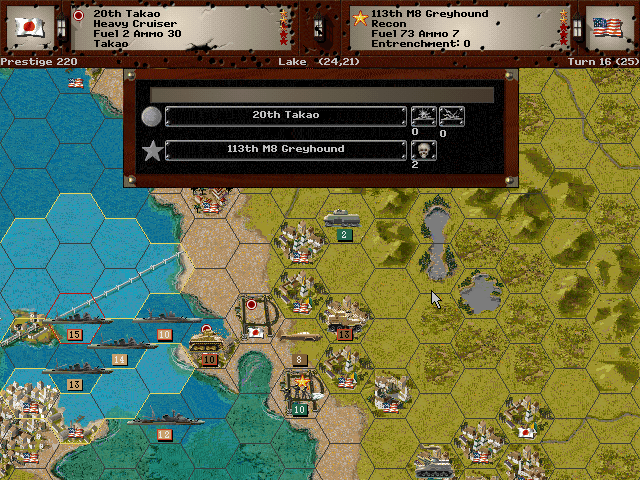
We secure more of Oakland and Alameda.

More air raids on San Francisco reveal that they've reduced troop levels, probably to send forces southward.
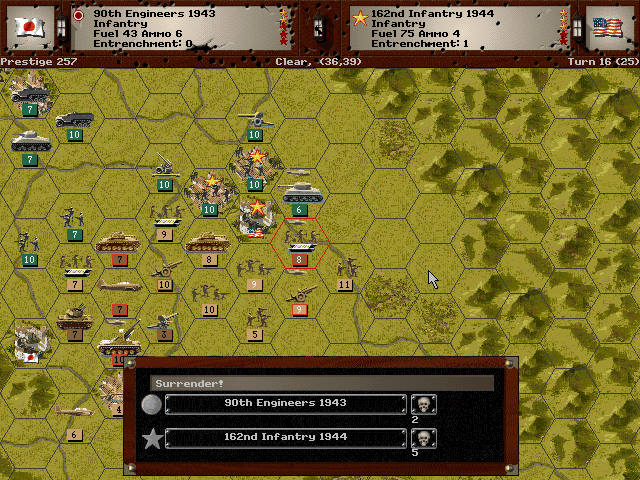
A successful attack on the heart of San Jose clears out a good portion of the city.
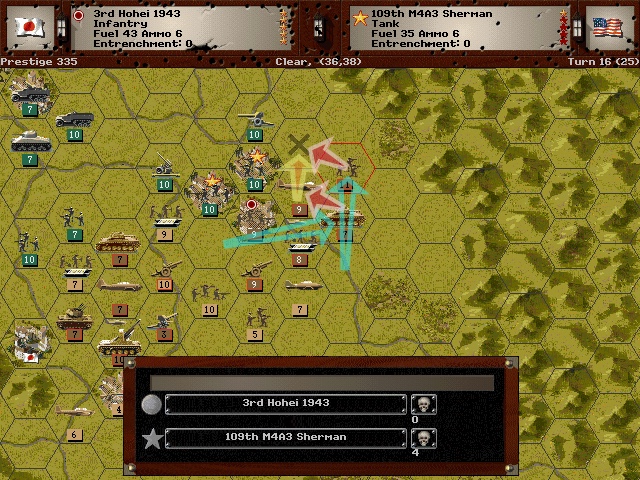
We also trap the enemy tanks with a surprise attack from the west.
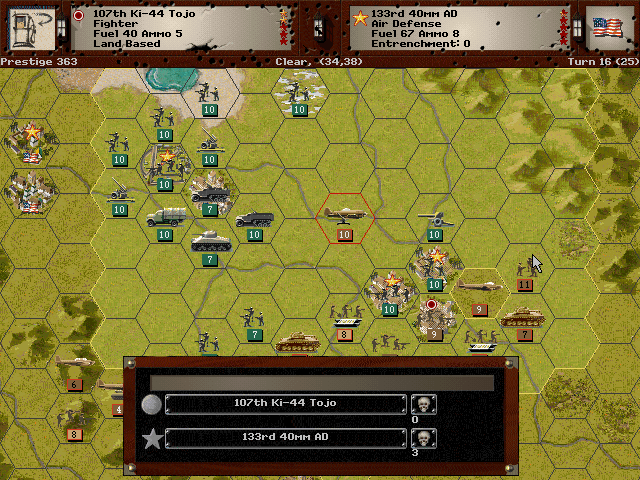
Thanks to the capture of Alameda NAS, we can now get all our planes into battle more regularly.
Allied Turn 16: September 15, 1944
Fair (Dry)
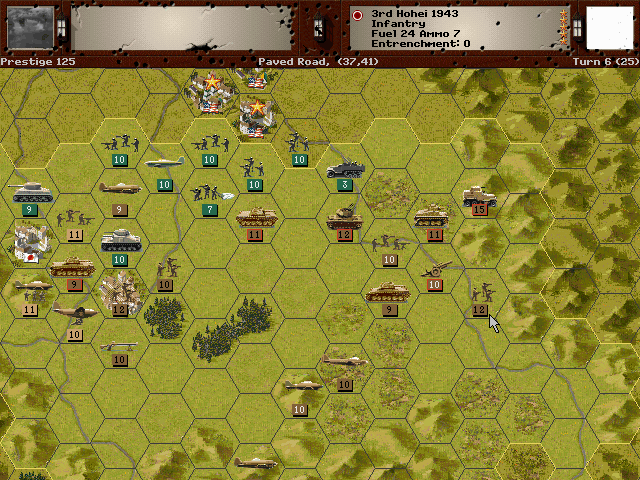
The Helldivers make an attack on the Takao; it's about the only attack they make for now.
Axis Turn 17: September 15, 1944
Fair (Dry)

Capturing the Oakland airport gives us even more space for planes to land.
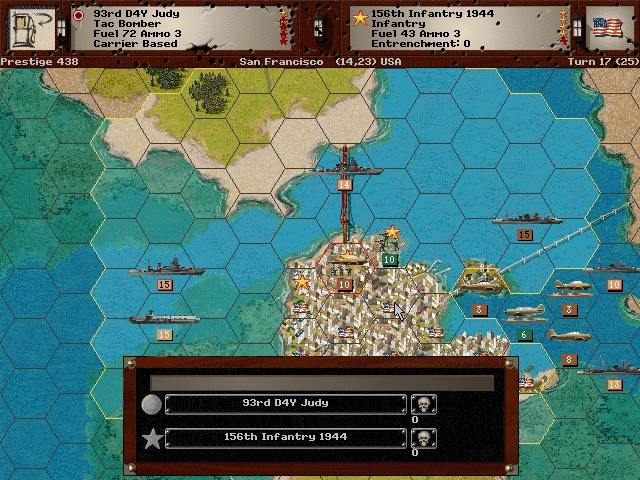
We keep up the raids on San Francisco. There is a plan in the works.
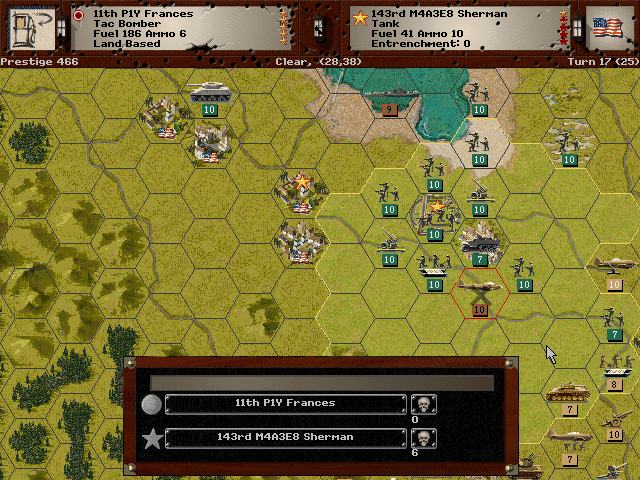
Despite heavy flak over Moffett we send in the bombers to get rid of the troublesome tanks.
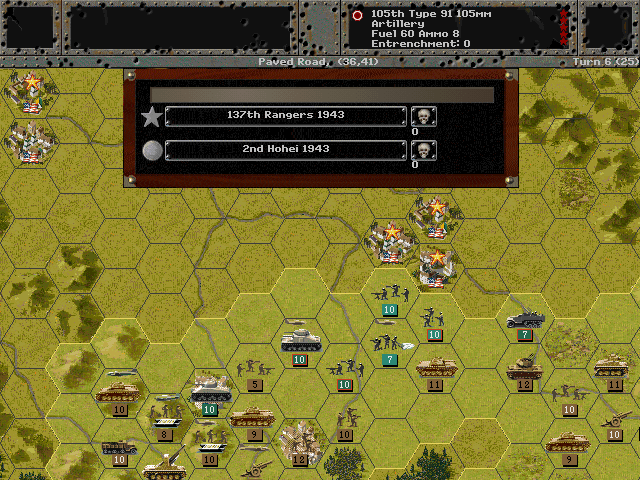
With time growing short, we make some desperate attacks on San Jose.
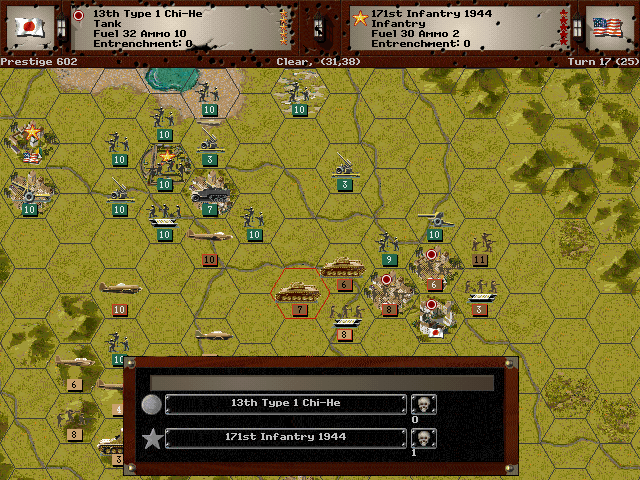
It's a success. The tide finally seems to have turned here, and we can finally push forward.
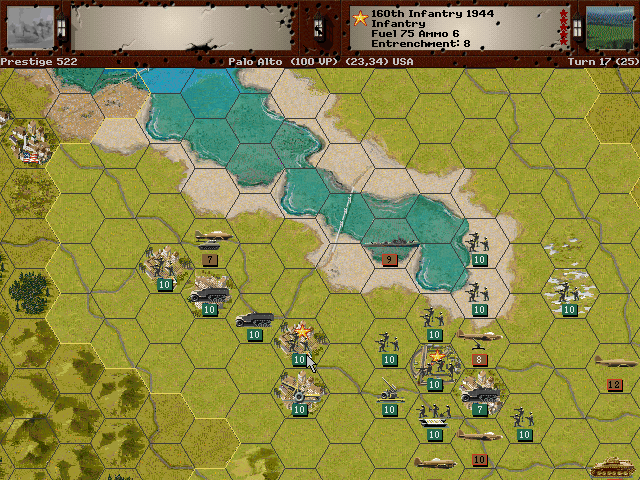
Airstrikes commence up the peninsula.
Allied Turn 17: September 15, 1944
Fair (Dry)
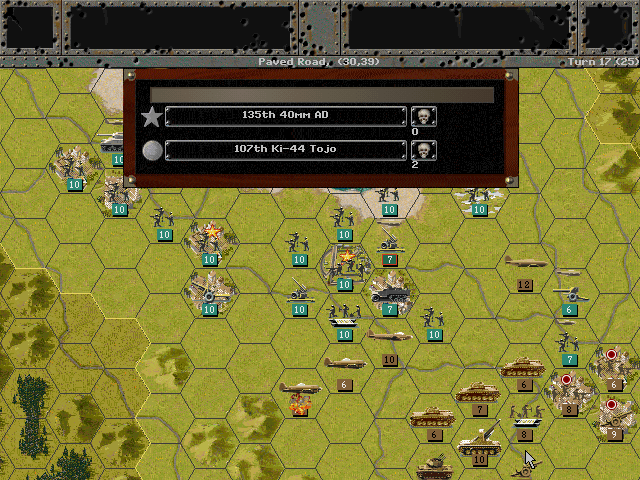
The Americans pull their shattered ground forces together; only the flak guns are firing against us.
Axis Turn 18: September 19, 1944
Fair (Dry)
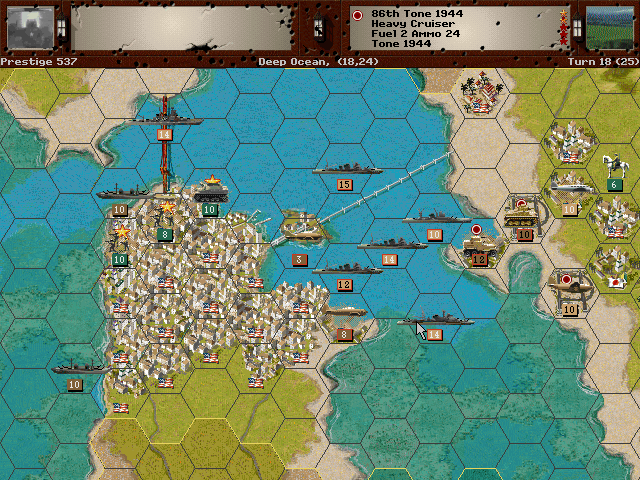
The secret sneak attack is unveiled -- our auxiliary forces loaded up in Monterey and make another landing directly into San Francisco.

We mop up most of the forces around San Jose, and will next move up to secure the Moffett airfield and the rest of the cities between there and San Francisco.
The battle's not quite decided yet, but our goal of controlling the San Francisco Bay is within reach.
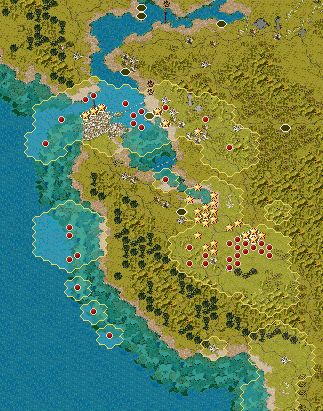
Unit Spotlight
Type 38 12cm Howitzer
PG Name: 120mm Type: Artillery
Effective Date: 12/44
Value:16 Cost:192 Spot:1 Move:1 MM:Gun Trans:Naval Fuel: -
Init:1 Range:3 SA:17 HA:11 AA:[1] NA:0 GD:2 AD:6 CD:0 TT:Soft Ammo:6
This is probably either the Type 38 (Meiji system, so 1905 AD) or is meant to represent coastal defense guns of the same size. Despite its age, it was used against China and through the war up until 1945. It's not clear to me why the game's introduction date is so late, because there isn't anything that was designed or purchased that late, and it is given the description in-game of 'standard Japanese medium artillery'.
In-game analysis: The anti-air capability is a nice (and rare) feature for a towed gun. More ammo would be better, but it's not a bad deal all in all. It's unfortunate that this comes so late, as it'd probably be the workhorse artillery for most of the campaign. This and the Ho-Ro seem to be artificially restricted for no reason other than increasing difficulty. [The restrictions make sense for a historic Japan that is losing the war; not so much for one that may go on to conquer the United States.]
Hiyo-class [Junyo-class] Carrier (2 built)
PG Name: Junyo Type:Carrier
Effective Date: 4/42
Value:35 Cost:630 Spot:2 Move:5 MM:Deep Naval Fuel: 71 Capacity: 3
Init:3 Range:0 SA:3 HA:6 AA:[12] NA:8 DA:0 GD:15 AD:7 TD:12 Ammo:40
The two ships of this type (some sources call it Junyo-class, but most use Hiyo-class) were conversions from passenger liners that were appropriated for military use. As a result, they were underpowered and also lightly-armored. They did see action as escort carriers, but their slow speed kept them in a limited role.
In-game analysis: This is only a little bit cheaper than the Shokaku, but a serious step down. This isn't even as good as the Akagi in most respects. It's more of a historical oddity/flavor unit than something to seriously consider purchasing.
Mistubishi Ki-46 III KAI (Dinah)
PG Name: Ki-46III Dinah Type:Fighter
Effective Date: 5/44
Value:33 Cost:396 Spot:3 Move:10 MM:Air Trans:No Fuel: 127
Init:7 SA:3 HA:3 AA:16 NA:0 GD:10 AD:13 Ammo:4
The Ki-46 was a reconnaissance aircraft that was put into production in 1941. It was quite successful as it boasted a high top speed and a high ceiling. The Model III could go even faster thanks to a better engine. In 1944, some were converted for use as night fighters by the addition of weaponry. However, the plane lacked armor and had to rely on its high speed if it was going to survive a fight.
In-game analysis: The Dinah can handle a variety of tasks, but none of them particularly well. Its strength is a high initiative, and its weakness is relatively low defense and ammunition. It is best used against smaller numbers of enemies; it should fly in and out quickly to avoid being ganged up on. If air superiority is gained, it can also be somewhat effective against ground targets.